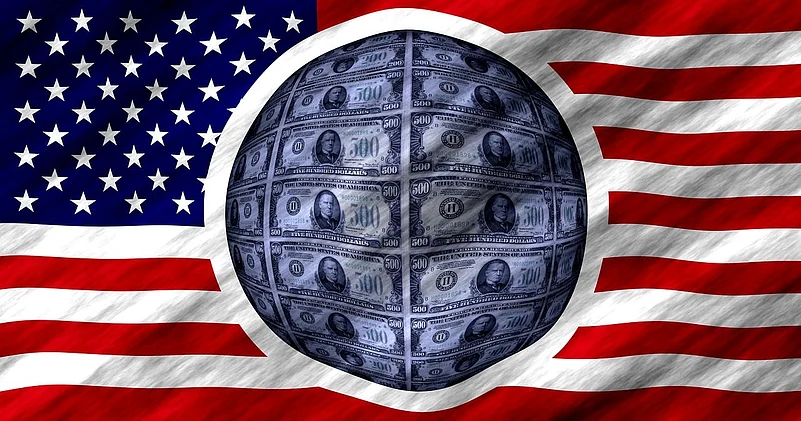By Chakravarthy V.
For decades, the U.S. dollar has reigned supreme as the world’s reserve currency. But in 2025, as Donald Trump prepares for another term, there’s renewed talk about deliberately weakening the dollar. While that might sound like a problem only for the U.S., this currency recalibration could send shockwaves across emerging markets, especially India.
To understand the implications, we need to break this down into three parts:
1. Why Trump wants a weaker dollar
2. How does it affect the global financial system
3. Why India should be both cautious and opportunistic
1. Why Weaken the Dollar?
The Trade Deficit Problem
America runs a persistent trade deficit—meaning it imports more than it exports. In 2023, this deficit touched $773 billion. A strong dollar makes U.S. goods expensive overseas, while making imports cheaper at home. This further widens the trade imbalance.
Trump’s logic is simple: Weaken the dollar → U.S. exports become cheaper → Trade deficit narrows → U.S. manufacturing revives.
Strategic Advantage in Trade Negotiations
A weaker dollar can be used as a bargaining tool in global trade. If countries like China or Mexico rely heavily on exports to the U.S., a falling dollar reduces the value of their dollar earnings, forcing them to renegotiate on American terms.
Domestic Manufacturing & Jobs
By making foreign imports more expensive, a weaker dollar nudges U.S. consumers to "buy American." This protects domestic industries and is politically appealing in an election year—especially for Trump’s working-class voter base.
2. Why the Dollar’s Strength Matters to the World
Here’s the paradox: the U.S. wants to weaken its currency, but the entire world is addicted to a strong dollar. Foreign countries recycle their trade surpluses by investing in U.S. government debt—Treasury securities.
As of Jan 2025:

These countries are deeply entangled with U.S. debt markets. A falling dollar reduces the real value of their holdings. If they stop buying Treasuries—or worse, start selling—it could lead to a bond market selloff, higher U.S. interest rates, and global financial instability.
Reserve Currency Pressure
The dollar makes up over 60% of global foreign exchange reserves. Countries don’t just use it for trade—they use it to stabilize their own currencies, service debt, and park national savings. Weakening the dollar threatens that system. If the dollar loses credibility, global reserve diversification (e.g., to Euro, Renminbi, or Gold) may accelerate.
3. What Does This Mean for India?
India, like most emerging economies, walks a tightrope between benefiting from global capital flows and protecting itself from external shocks. Here's how a weaker dollar could impact us:
A. Capital Flows and Stock Markets
● Historically, a weaker dollar boosts capital inflows into emerging markets, including India. Investors chasing better yields tend to pour money into Indian equities and bonds.
● Lower U.S. yields mean Indian government bonds and debt instruments become relatively attractive.
However: If the dollar weakens too quickly, it may trigger a flight to safety, where risk-averse investors pull out of emerging markets fearing instability.
B. Currency Appreciation and Export Headwinds
If the rupee appreciates due to dollar weakness:
● Oil and technology imports become cheaper (positive)
● But India’s exporters—IT, pharma, textiles—suffer margin pressure due to stronger rupee pricing (negative)
Exporters may lose competitiveness, especially against nations like Vietnam and Bangladesh, where currencies remain relatively weak.
C. Inflation and Imported Commodities
● A weaker dollar reduces the cost of imported oil and commodities.
● Since India imports over 80% of its crude oil, this could help lower inflationary pressure and improve the current account balance.
But this advantage is temporary. If global demand picks up due to cheap dollars, commodity prices may rise again, neutralising the benefit.
D. Debt Servicing
India’s external debt is around $650 billion, most of it dollar-denominated. A weaker dollar makes it cheaper for Indian corporates and the government to service this debt, freeing up capital for domestic investment.
The Structural Risk: What if Confidence in the Dollar Erodes?
Looking at the second chart, U.S. liabilities (investments made by foreigners into the U.S.) touched $35 trillion in 2024, much more than America’s overseas assets.

If the dollar continues to weaken and trust in U.S. stability erodes, this wall of capital may start reversing. That kind of deleveraging would hurt not just the U.S., but every country exposed to American debt, including India.
Final Thoughts!
Trump’s push for a weaker dollar is a tactical decision with strategic implications. For India, it opens up both windows of opportunity and corridors of caution.
Key Takeaways:
● Export sectors could suffer if the rupee appreciates too much
● Foreign capital may flow into India in the short term—but volatility will rise
● Cheaper imports could help ease inflation and reduce oil burden
● Currency management will be key; RBI may need to actively intervene
As the U.S. resets its trade and currency policy, India must prepare to defend its export base, attract long-term capital, and strengthen its monetary toolkit.
The next global realignment may not be about trade wars or tariffs—but about currency credibility. And in that war, the one who balances agility with resilience wins.

(The author is Cofounder & Executive Director, Prime Wealth Finserv Pvt. Ltd.)
(Disclaimer: Views expressed are the author's own, and Outlook Money does not necessarily subscribe to them. Outlook Money shall not be responsible for any damage caused to any person/organisation directly or indirectly.)









